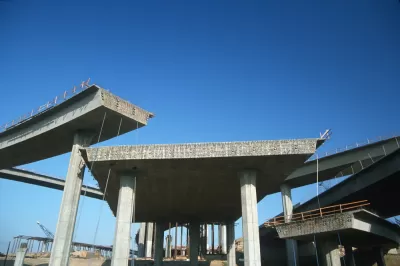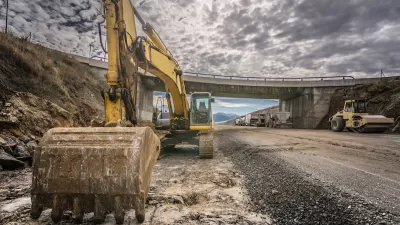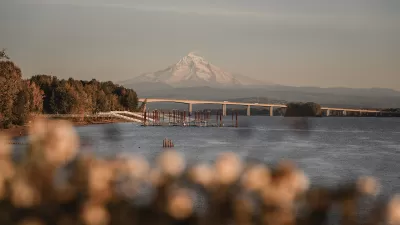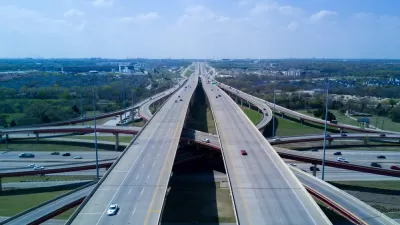The bipartisan infrastructure law, which directs massive investments to state transportation projects, could fast-track some of the most destructive highway expansion projects.

In part one of an annual series from the Public Interest Research Group titled “Highway Boondoggles,” James Horrox, Bryn Huxley-Reicher and Matthew Casale of Streetsblog describe how the federal infrastructure bill passed last November could accelerate some of the worst, most wasteful highway expansion projects.
“The federal dollars made available through the infrastructure deal could be spent on fixing our aging roads, making our streets safer, and making it easier to travel on transit, by bike or on foot, giving Americans real, viable options for getting around without having to drive,” the article notes. However, “across the country, state and local governments continue to move forward with tens of billions of dollars’ worth of new and expanded highways that do little to address today’s real transportation challenges, while diverting funding from much-needed infrastructure repairs.” The authors list the many harms of highway expansion, including increased congestion over time, wasted resources, harmful emissions, and displacement of communities.
Although the Biden administration has expressed its “preferences” toward maintenance and multimodal projects, decisionmaking ultimately rests with state agencies. The authors include a list of suggestions for policymakers, such as investing in reducing automobile dependence and reorienting transportation funding to maintenance and repair.
In future installments, the authors will describe the seven highway projects that made the cut as this year’s Highway Boondoggles. You can also read the full report here.
FULL STORY: How the Bipartisan Infrastructure Law Could Fast-Track Harmful Highway Boondoggles

Americans May Be Stuck — But Why?
Americans are moving a lot less than they once did, and that is a problem. While Yoni Applebaum, in his highly-publicized article Stuck, gets the reasons badly wrong, it's still important to ask: why are we moving so much less than before?

Using Old Oil and Gas Wells for Green Energy Storage
Penn State researchers have found that repurposing abandoned oil and gas wells for geothermal-assisted compressed-air energy storage can boost efficiency, reduce environmental risks, and support clean energy and job transitions.

Placekeeping: Setting a New Precedent for City Planners
How a preservation-based approach to redevelopment and urban design can prevent displacement and honor legacy communities.

San Francisco’s Muni Ridership Grew in 2024
The system saw its highest ridership since before the Covid-19 pandemic, but faces a severe budget shortage in the coming year.

Colorado Lawmakers Move to Protect BRT Funding
In the face of potential federal funding cuts, CDOT leaders reasserted their commitment to planned bus rapid transit projects.

Safe Streets Funding in Jeopardy
The Trump administration is specifically targeting bike infrastructure and other road safety projects in its funding cuts.
Urban Design for Planners 1: Software Tools
This six-course series explores essential urban design concepts using open source software and equips planners with the tools they need to participate fully in the urban design process.
Planning for Universal Design
Learn the tools for implementing Universal Design in planning regulations.
Heyer Gruel & Associates PA
City of Moreno Valley
Institute for Housing and Urban Development Studies (IHS)
City of Grandview
Harvard GSD Executive Education
Salt Lake City
NYU Wagner Graduate School of Public Service
City of Cambridge, Maryland





























